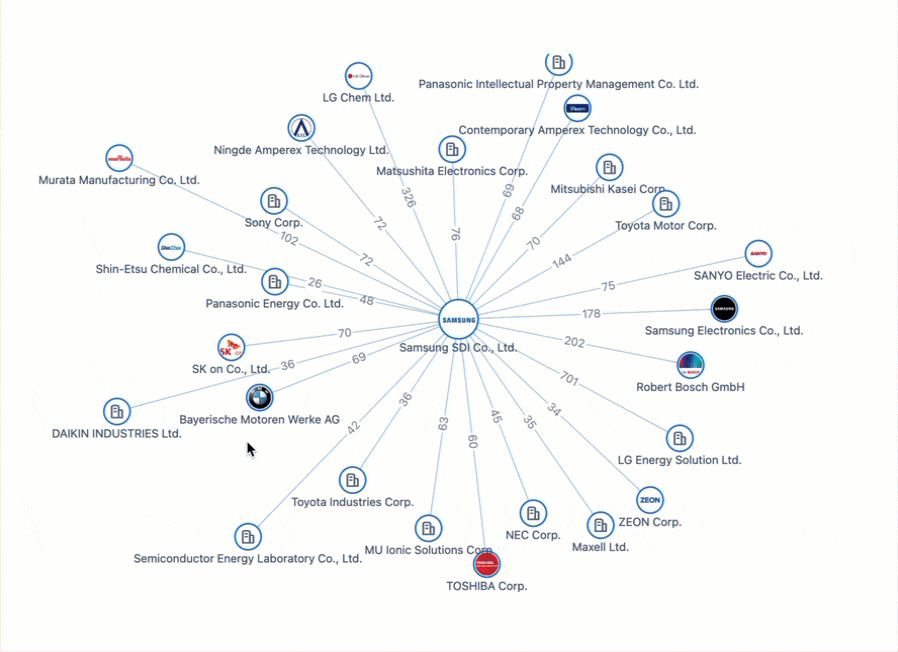How to Maximize the Potential of Design Patents
When it comes to intellectual property protection, design patents are often underestimated assets. Design patents offer vital protection for the visual attributes of a product, encompassing its shape, surface, and aesthetic appeal (think Coca-Cola’s curvy bottle).
However, to fully capitalize on their potential, a well-informed approach involving meticulous searching and data analytics is crucial. In this article, we’ll explore what design patents are, why they’re important, and strategies you can use to maximize their potential.
Jump to . . .
- What are Design Patents?
- Design Patents vs. Design Rights – What’s the Difference?
- Why are Design Patents Important?
- Design Patents: Notable Cases
- Maximizing the Potential of Design Patents with Search & Analytics
- Leveraging Design Patent Analytics
- Implementing These Strategies
What are Design Patents?
Design patents are a category of intellectual property protection that safeguard the unique ornamental or aesthetic appearance of a product. Unlike utility patents, which cover the functional aspects or the way an invention works, design patents focus solely on how a product looks.
The primary goal of a design patent is to prevent others from making, selling, or using a design that looks substantially similar to the patented one. This ensures that innovators can protect their original and distinctive designs from imitation.
The application process to receive a design patent typically consists of drawings or photographs of the design, alongside a brief description to the appropriate patent office. For example, in the US, design patents are applied for at the United States Patent and Trademark Office (USPTO).
Design Patents vs. Design Rights: What’s the Difference?
Design patents, commonly employed in the US, are granted based on a formal application process where designers need to showcase the novelty and non-obviousness of their creation(s).
Once approved, they grant exclusive rights, typically for 15 years from the grant date, ensuring no one else can reproduce or sell a design that bears significant resemblance.
In contrast, design rights, which are more common in European regions, can either be registered, offering more robust protection for a set period after an official registration process, or unregistered, which spring to life automatically once a design is created and fixed in a tangible form.
While unregistered rights offer quicker, albeit shorter, and sometimes less concrete protection, registered rights echo the protective strengths of design patents. In essence, while both design patents and design rights serve to shield the visual allure of products, their procedures, terminology, and regional implications differentiate them in the vast realm of design protection.
Why are Design Patents Important?
Design patents act as guardians of creativity, shielding the unique ornamental elements that give a product its distinct flair. Imagine you’re in a marketplace where aesthetics is king, such as fashion or consumer electronics. Here, a novel design isn’t just about looks — it’s a primary catalyst driving consumer interest and sales. So, when a business crafts a unique design, protecting it becomes paramount to maintaining its edge over competitors.
Design Patents: Notable Cases
Below we’ll explore some significant cases that illustrate the importance of design rights and design patents in today’s business environment.
1.) Apple vs. Samsung
The Apple vs. Samsung case was a landmark legal battle in the technology sector, primarily centered around allegations of patent infringement related to smartphone design.
Apple contended that Samsung copied the design features of its iPhone and iPad, asserting that Samsung’s Galaxy devices bore striking similarities. The litigation process involved a jury verdict, appeals, and fluctuating awarded damages, ultimately setting critical precedents regarding IP protection. Ultimately, a jury awarded Apple $539 million and concluded that Samsung copied patented smartphone features.
This case emphasized the need for businesses to recognize the strategic significance of design patents and the potential consequences of design infringement.
2.) Dyson vs. SharkNinja
Dyson, a leader in the vacuum cleaner industry, took legal action against SharkNinja, alleging that the latter’s vacuum cleaner designs infringed on Dyson’s patented designs. Dyson pursued a claim for $200 million, positioning, making it one of the few patent disputes where the stakes exceeded $100 million.
The judge overseeing the cases ultimately sided with SharkNinja, stating “viewing the undisputed facts in the light most favorable to Dyson, the Shark Rockets have a substantially different overall ornamental appearance than the Asserted Patents.”
3.) Trunki vs. Kiddee Case
The Trunki design patent case, involving the British company Magmatic Limited, revolved around the protection of the distinctive design of Trunki’s ride-on suitcase.
Ultimately, the Supreme Court ruled that the Community Registered Design (CRD) for the popular children’s Trunki suitcase was not violated by its competitor, the Kiddee Case. In essence, the Supreme Court unanimously aligned with the Court of Appeal’s view that the Kiddee Case conveyed a distinct overall impression compared to the Trunki. The Trunki’s CRD impression was that of a horned animal, contrasting with the Kiddee Case, which resembled either an insect with antennae or an animal with ears.
This legal dispute highlighted the complexities of design protection and intellectual property law. The case revealed that the scope of registered design rights depends on the overall visual impression and that even seemingly minor differences can impact infringement claims. It is a reminder that companies must not only secure design protection but also remain vigilant about the uniqueness of their product aesthetics.
Maximizing the Potential of Design Patents with Search & Analytics
Before rushing to secure protection for your innovative design, a comprehensive search of existing design patents and industrial design rights is a prudent step.
This diligence provides several advantages:
- Avoid Duplication: You might be surprised to find that a similar design already exists. This discovery can save you time, money, and potential legal battles.
- Refine Your Design: Analyzing existing designs can provide valuable insights. It can help you refine your design to make it even more unique and innovative.
- Strengthen Your Application: A well-informed application is more likely to be granted. By referencing existing designs, you can highlight what makes your creation truly distinctive.
- Strategic Positioning: Understanding the landscape of design patents can inform your strategy. You can identify white spaces and opportunities for innovation.
Leveraging Design Patent Analytics
Staying ahead of the curve requires a deep understanding of your industry, competitors, and emerging global trends. One powerful yet often overlooked tool in this quest for market dominance is the analysis of design patent data.
Here’s how diving deep into patent analytics can significantly benefit your business:
1. Market Insights: Diving into design patent data isn’t just about numbers and filings; it’s about uncovering patterns and deciphering consumer tastes. By interpreting this information, businesses can glean invaluable insights into what’s trending and what’s fading away. When you understand the broader market landscape, it can provide a roadmap for your product development, ensuring that your offerings align with current demand and preferences.
2. Competitive Intelligence: Knowledge is power, and in the business realm, understanding your competition’s moves can be a game-changer. Scrutinizing your competitors’ design patent portfolios can offer a comprehensive view of their strategic direction. What are they focusing on? Where might they be lacking? With this intelligence, you can craft a strategy that leverages their weaknesses and amplifies your strengths, giving you a competitive advantage in the market.
3. Global Reach: In our increasingly interconnected world, businesses can’t afford to operate with a narrow, localized viewpoint. The market is global, and so are design patents. Utilizing analytics can equip you with a clear perspective on international IP landscapes. Whether you’re looking to expand overseas or protect your designs in multiple countries, a global approach to patent analytics can make your journey smoother and more informed.
4. Risk Mitigation: In the realm of intellectual property, threats often come without warning. However, with a vigilant approach to monitoring new design patent applications, you can spot potential infringements before they escalate into significant issues. This proactive approach not only shields your designs but also saves you from potential legal tussles and associated costs.
Implementing These Strategies
Adopting a systematic approach is essential for optimizing the utilization of design patent analytics.
Here are four steps to help you get started:
- Start with Research: Begin by searching for existing design patents and industrial design rights related to your field. Online databases and IP professionals can help.
- Analyze and Refine: Study these patents and analyze their strengths and weaknesses. Use this insight to refine your design.
- Global Outlook: If you plan to operate internationally, expand your search and analytics efforts to cover global markets.
- Continuous Monitoring: Don’t stop after securing your patent. Continuously monitor the landscape to protect your rights and stay ahead of competitors.
Design patents and industrial design rights are potent tools for securing your creative assets. When combined with the strategic use of searching and analytics, they form a robust strategy capable of propelling your business to new heights.
Patsnap’s Professional Services: Customized Solutions to Meet Your Needs
Unlock the full potential of your intellectual property and innovation with Patsnap’s Professional Services. Our expert team is dedicated to guiding you through the intricacies of IP strategy, research, and analytics. Whether you’re a startup looking to protect your ideas or a multinational corporation seeking to optimize your IP portfolio, we offer tailored solutions to meet your unique needs.
About the Author

Matthew Veale is an experienced European Patent Attorney and former UKIPO Patent Examiner. He works with the team at Patsnap to unlock detailed insights, helping forward plan and create profitable IP and research & development strategies based on patent data. He has expertise in patent drafting and prosecution; freedom to operate searches; novelty searches; invalidity actions; patent landscapes and competitor intelligence. With a technical background in computer science, he covers the fields of software apps; artificial intelligence; machine learning; blockchain; and also, medical and sports technologies.
Your recommended content
-

All Charged Up: Power Batteries & The Patent Race Shaping the Future of Electric Mobility
Category: Article | Category: battery technology | Category: electric vehicle | Category: EV | Category: lithium ion | Category: lithium ion battery | Category: NEV | Category: new energy vehicles
Monday, April 22, 2024
In the ever-evolving landscape of innovation, the electric vehicle (EV) industry stands as a beacon of technological transformation. As we explore the patents propelling the EV revolution, Apple's venture serves as a poignant example of the challenges even industry giants face in this competitive arena. Join us on a journey through the global patent landscape, where the quest for superior power solutions unfolds, and where the true pioneers of the EV revolution are making their mark.
-

The People vs. AI: Who Owns Ideas in the Era of Generative Artificial Intelligence?
Category: AI era | Category: AI-driven creativity | Category: AI-generated creations | Category: Article | Category: copyright and patent rights | Category: digital innovation | Category: innovation | Category: intellectual property law | Category: legal implications | Category: OpenAI Sora | Category: patent law | Category: Research Tag | Category: Sora | Category: text-to-video generative AI | Category: who owns AI
Monday, April 22, 2024
OpenAI’s Sora software, a text-to-video generative AI model, recently made headlines showing a series of 1-paragraph prompts and some high-quality footage generated based on those prompts. It is a rightfully impressive showing, but it’s still too early to identify how IP law will be disrupted by generative AI. This editorial delves into the multifaceted landscape of Sora's impact, offering insights into the future of innovation and ownership in the AI era.
-

Patsnap Releases 2023 Global Innovation Report: The Brilliant Names to the Dynamic Landscape of Innovation
Category: Article | Category: eBook | Category: Research Tag | Category: Whitepaper
Wednesday, November 15, 2023
The Global Innovation 100 and Global Disruption 50 transcend individual entities, each representing a small innovation ecosystem with numerous subsidiaries. Through the innovation data of these companies, we gain insights into the characteristics, structures, and trends of global innovation.